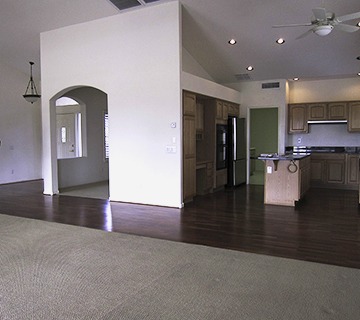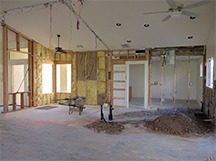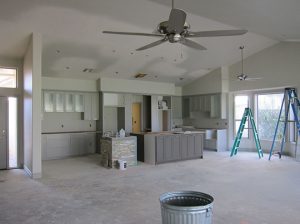taking down walls – open plan living
what you need to consider before we take down any walls. our design concept’s foundation is based the client’s envisioned use of their home. we assess the home’s division of public and private spaces. in recent years, builders have shifted the public space to floor plans that provide “great room” living which combines the kitchen, family and an informal eating area in some cases the formal dining room is kept while the formal living room has been eliminated. the private spaces are still compartmentalized into separate smaller rooms.
 we have found it quite common to design open plan spaces for our remodeling projects and it is unusual for clients to require the opposite. when considering the positives of an open plan – expansive, airy spaces flooded with natural light; increased connection to the outdoors; communal use for all who dwell in the home, one must also consider the negatives – lack of privacy; lack of walls for storage or display; cooking smells and the integration of activities which may occur at the time same – cooking, reading, homework, playing games and television viewing.
we have found it quite common to design open plan spaces for our remodeling projects and it is unusual for clients to require the opposite. when considering the positives of an open plan – expansive, airy spaces flooded with natural light; increased connection to the outdoors; communal use for all who dwell in the home, one must also consider the negatives – lack of privacy; lack of walls for storage or display; cooking smells and the integration of activities which may occur at the time same – cooking, reading, homework, playing games and television viewing.

remodeling is a collaborative effort between the client, the contractor and ourselves. we look at each floor plan and begin with our analysis of the home’s orientation to the harsh arizona sun and the impact and degree of natural light. from there the client’s needs as to how they want to use their home will lead us to the best concept based on the client’s lifestyle. we inspire the client to explore multi-use for rooms that would ordinarily be single purpose…dining rooms do not always have to be dining rooms, the same for separate living rooms. we will discuss that topic in future posts.
if you have questions or comments, please write to terry at terry@harrisonherbeck.com.


 to ensure success, have a plan. do not act on impulse. identify what your goals are. have a realistic budget and do your homework. research products and ask questions. find suppliers who are invested in answering your questions.
to ensure success, have a plan. do not act on impulse. identify what your goals are. have a realistic budget and do your homework. research products and ask questions. find suppliers who are invested in answering your questions.
